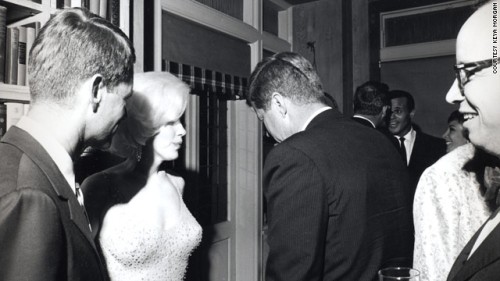Marijuana Science: Reasonable Discussion Is Necessary—and Nearly Impossible

People like intoxicants. It’s in the Bible. Even Supreme Court justices such as Brett Kavanaugh like them—a lot: “I like beer! I like beer! I like beer!” People like them for a lot of reasons, including enjoyment and enlightenment. And yes, these include all the substances we may use regularly to change how we act and feel, such as coffee and tobacco.
Nothing is free of consequence, certainly not intoxicants. As individuals we take the good with the bad. The same goes for the society the individuals comprise and affect. Society sometimes like to step in to assert balance on the weight of good and bad.
With alcohol Prohibition, America gave the world the best living laboratory of this balancing, specifically how this balancing could go very wrong. By ascribing social ills to a behavior that few were willing to give up, America turned into a nation of scofflaws enabling and enriching criminals and, ironically, the use of alcohol actually increased.
But the failure of Prohibition as a social tool never meant that alcohol could not be a sinister force. It is an enabler of good times and is complicit in many tragedies. As a society we agree to take the good with the bad, and hope and encourage individuals to maintain their own balance, with the law as a backstop.
Prohibition is also an example of the extremism that has attached to other intoxicants, extremism that always pushes out reasonable discussion in favor absolutes, that is, absolute evils. One reaction to unreasonable extremism is extremism: if something you know is good is incorrectly labelled absolutely bad by others, obviously it is absolutely good.
There is no possibility that marijuana is absolutely good for everybody. There is no possibility that marijuana at certain potencies used in certain frequencies is good for everybody. Research into this topic is ramping up, as in this new study:
Findings
Between May 1, 2010, and April 1, 2015, we obtained data from 901 patients with first-episode psychosis across 11 sites and 1237 population controls from those same sites. Daily cannabis use was associated with increased odds of psychotic disorder compared with never users (adjusted odds ratio [OR] 3·2, 95% CI 2·2–4·1), increasing to nearly five-times increased odds for daily use of high-potency types of cannabis (4·8, 2·5–6·3). The PAFs calculated indicated that if high-potency cannabis were no longer available, 12·2% (95% CI 3·0–16·1) of cases of first-episode psychosis could be prevented across the 11 sites, rising to 30·3% (15·2–40·0) in London and 50·3% (27·4–66·0) in Amsterdam. The adjusted incident rates for psychotic disorder were positively correlated with the prevalence in controls across the 11 sites of use of high-potency cannabis (r = 0·7; p=0·0286) and daily use (r = 0·8; p=0·0109).
Interpretation
Differences in frequency of daily cannabis use and in use of high-potency cannabis contributed to the striking variation in the incidence of psychotic disorder across the 11 studied sites. Given the increasing availability of high-potency cannabis, this has important implications for public health.
Just mentioning this will seem to some a betrayal of the movement to end marijuana prohibition, a truly benighted and thoughtlessly reflexive policy. It is not a betrayal. It is merely a plea for something we have rarely had before: an open and informed public conversation about a widely used and impossible to stop intoxicant.
If we’ve learned nothing else in recent days, it’s that nothing is more harmful than hiding the truth, nothing more valuable than putting all the evidence on the table. If you believe in climate science, then you have to believe in marijuana science. Only then can we try for a reasonable discussion, hard as that may be.










